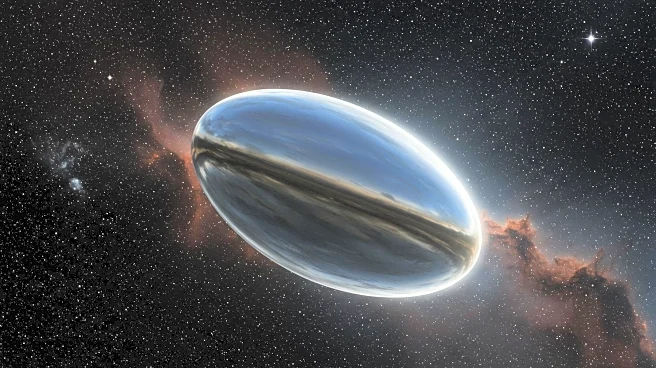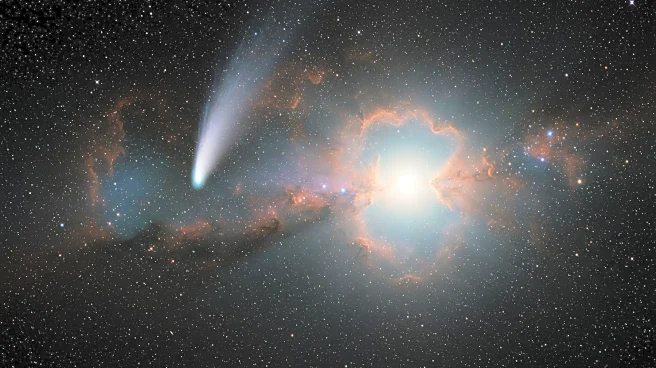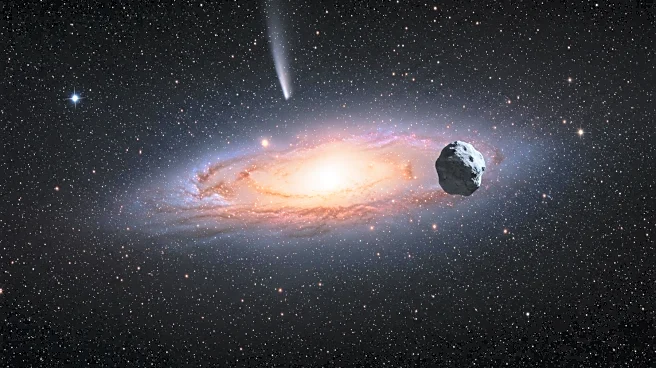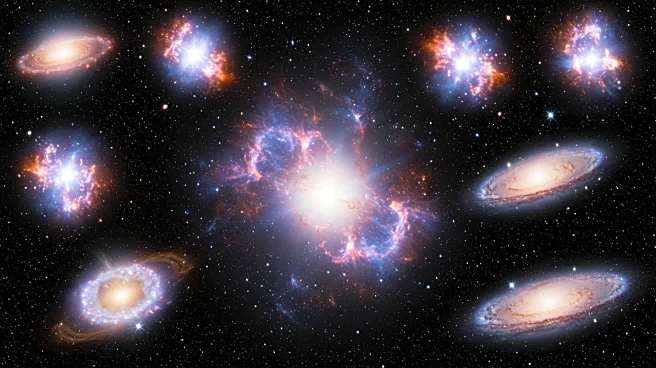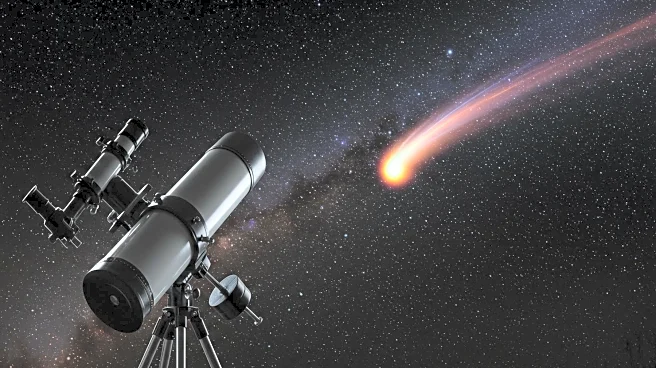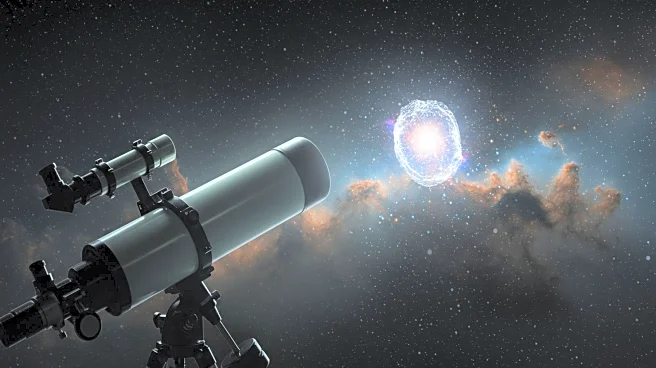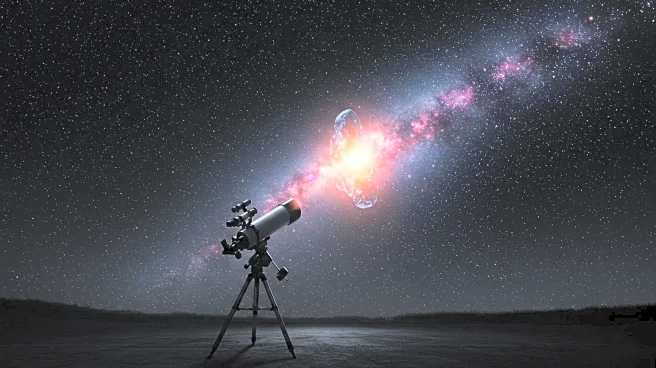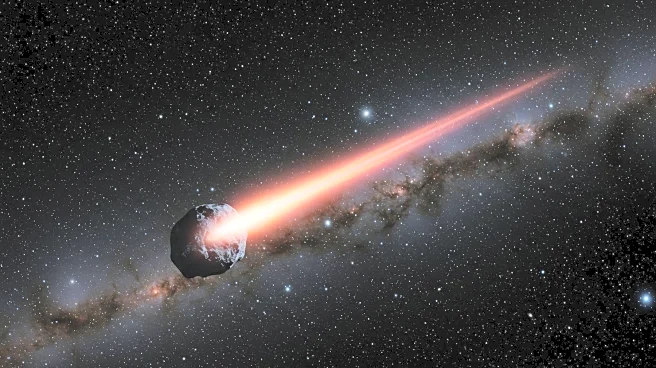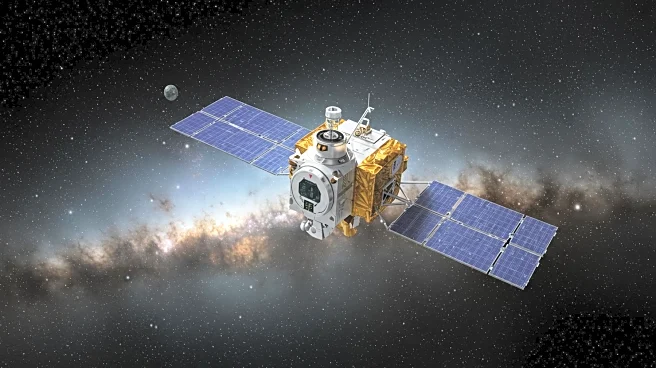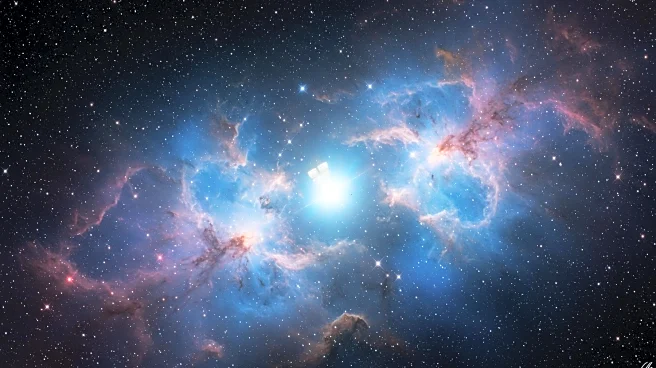What's Happening?
Avi Loeb, head of the Galileo Project, has provided new insights into the interstellar object 3I/ATLAS, observed by the Hubble Space Telescope. The object, which appears as a fuzzy glow, is passing through the interplanetary zodiacal dust. Loeb's research notes suggest that the dust outflow around 3I/ATLAS is confined by ram pressure and lacks a prominent cometary tail. The object's trajectory aligns with the ecliptic orbital plane, raising questions about its nature and origin. Loeb speculates that 3I/ATLAS could be an iceberg made of hydrogen or helium, or possibly a technological design.
Why It's Important?
The study of 3I/ATLAS offers valuable insights into the behavior and characteristics of interstellar objects. Understanding the nature of such objects can enhance our knowledge of the materials and processes present in interstellar space. The findings challenge existing theories about the composition and formation of interstellar objects, potentially leading to new discoveries in astrophysics. The research also highlights the importance of advanced observational techniques in uncovering the mysteries of the universe.
What's Next?
Further observations and analysis are planned as 3I/ATLAS approaches the Sun, which may reveal more details about its composition and behavior. Researchers will continue to study the object to determine its true nature and origin. The findings could have implications for the study of interstellar objects and the search for extraterrestrial life.
